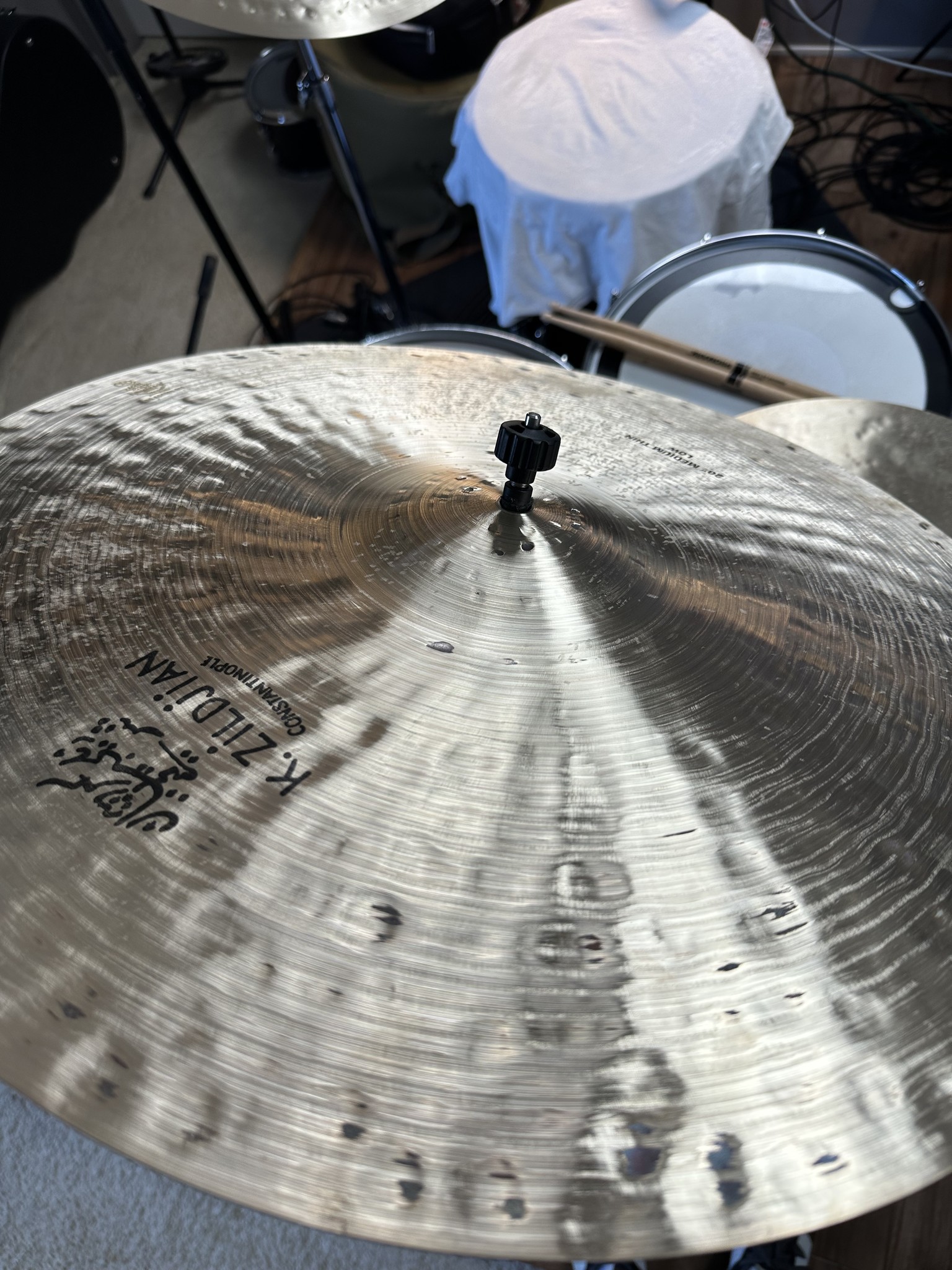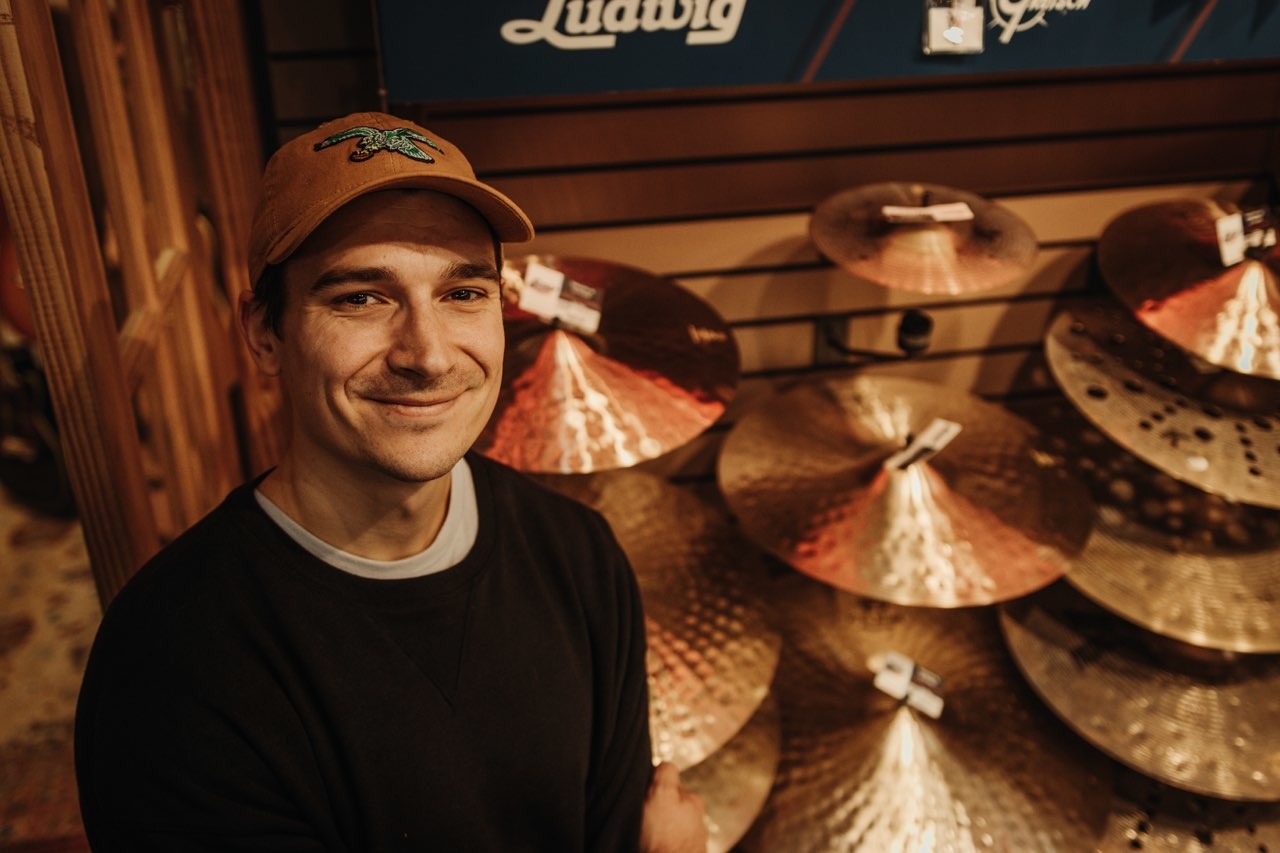The Left Cymbal Dilemma: A Quest for the Impossible?
Have you ever been on a quest to find the “perfect” cymbal only to come up short time and time again? For me, it is safe to say that I have spent what feels like 4800 hours hammering out (pun intended) a cymbal “dilemma.” I refuse to settle when it comes to drum gear, especially when it comes to cymbals. Just ask Justin. A few months ago, I embarked on a journey to find the “perfect” left-side cymbal to fit all of my needs. With my two-cymbal setup, I wanted something that was capable of opening up enough to serve as a primary crash cymbal, all the while still providing enough stick definition to be utilized as a ride cymbal. Now, with the other qualities I was also looking for (dark, dry-ish, washy), it certainly seemed like, at times, that finding this cymbal was more difficult than finding a unicorn, an alien, and Bigfoot having a tea party together in the same room. I digress.
Allow me to share my story of embarking on a frustrating, yet deeply rewarding, journey to find the cymbal I have been searching for — dreaming for — Google searching 13,000 sound clips for (not kidding, just ask my wife). My hope is that I am not alone in what I desire from a left-side cymbal — and that my journey can help someone else find the perfect fit.
I wanted to find something specifically in the Zildjian family. There is something about the sound of the Zildjian K line which resonates with me (how am I not a dad with all of these jokes?). My appreciation for dark cymbals has certainly swayed me in this direction, but it hasn’t been until recently that I have been this selective about my cymbals. I play all types of music, and within the past year, I’ve landed on a simple two-cymbal set up — a 22” ride on my right and a large crash/ride on my left. This allows me to play multiple genres, i.e., worship, rock/funk, and jazz. However, it’s not just the versatility of the layout I appreciate; I also enjoy the simple approach and the creativity it calls for within whichever genre I am playing. Now, because there’s not a plethora of cymbals to hit in that small of a setup, the two I do choose need to be capable of performing multiple duties — like a “multi-tool” of cymbals.
So, I sat down and made a list of exactly what I was looking for in a left-side cymbal:
- Stick articulation (for jazzy patterns)
- Crashable, (for worship/rock settings)
- Dark/low in pitch (my preference), but also to eliminate any harsh frequencies in our church’s auditorium (this alone could be a blog post all by itself).
- Washy/complex (to fill any space in slow-tempo music)
- Thin to medium thin in weight (for a quick response when crashing)
Now, that’s not too much to ask from a cymbal, is it?
I’d be lying if I said much of my journey wasn’t trial and error. This is where some doubt started to set in, and I began to believe this really might be too much to ask from a cymbal. In all fairness, I do understand this is asking a lot. The process would typically go like this: I would get incredibly excited while dabbling around on a cymbal in the store, only to later be let down once I was in a different setting with different acoustics. I had this happen quite a few times, and it felt like that time when I was a kid and went to pour a cup of sweet tea from the jug in the refrigerator, only to realize two gulps in that it was roast beef juice my grandmother had poured into a gallon jug. I had been trying 21” ride cymbals, and after a few letdowns, I began realizing that 21” cymbals were a bit too big to function as a “go-to” crash cymbal. Although in particular, I was quite impressed by the Zildjian K Sweet 21” Ride and the K Custom Special Dry 21” Ride, but they just were slightly too much cymbal to get the response I needed as a crash cymbal. It’s important to note, however, that these cymbals were incredibly dynamic when utilized as a primary ride cymbal.
On the other end of the spectrum, 18—19” cymbals were too small and too high-pitched — especially for the worship music setting. What I started to realize was that 20” cymbals seemed to be the sweet spot for the specific sound I wanted. They weren’t too high-pitched, and they also met the aforementioned crash and ride cymbal criteria.
After narrowing down the size (20”), my journey took a turn directly into a massive black hole labeled, “cymbal weight.” It sucked me in like a vacuum, and there was no getting out. In my circumstance, I began realizing the weight was a helpful tool to gauge the cymbal’s ability to provide stick articulation, while also being thin and light enough to open up as a crash cymbal. While the weight of the cymbal is certainly not a hill I die on, it proved to be a helpful criteria to begin really narrowing things down. So, I started to generally look within a certain weight range (1800—2000g). Throughout this process, I found that once I wandered a few hundred grams above or below my desired weight range, I began to run into similar issues — too heavy to crash with little wash or too light for sufficient stick clarity. Uh!
I even tried a 20” K Custom Special Dry Crash thinking I could get away with riding on it, and in the store, it sounded promising, but once I began playing in a group setting, it only served well as a crash cymbal, which is fair. It is called a “crash cymbal,” after all. It wasn’t until I started browsing the K Constantinople section that I began to see some promising options. I was aware of the K Cons, as I had owned one for a brief period of time this past year. In fact, it was a 20” K Constantinople Renaissance Ride. It was a rather thin cymbal, and the more I played it, I began realizing how quiet it was. Now, its tone and richness blew me away, but it seemed to thrive best in lower-volume settings. But, when volume is required, volume is required. So, at the time, I decided to go in a different direction — a 20” A Avedis Crash/Ride to be exact. For a while, I played that while writing off the K Cons, but it wasn’t until recently that Justin convinced me to circle back to them. So, I went in with a little bit of skepticism from my previous experience.
Fast forward to this point, and I have played every 20” K Constantinople Ride in the series — the Bounce, Renaissance, Medium Thin High, Medium Thin Low, and Medium. Boy oh boy, everything truly sounds like butter, but there was one in particular that made my eyes light up like an eight-year-old boy in the Star Wars section at Target. It was smooth, dark, rich, and complex. This was it. This was the sound I had set out to find. It wasn’t too light, nor was it too heavy. It was truly the best of both worlds. As I spent more time with it, it almost felt as if I was “double dipping” by getting such fantastic stick definition from it, while simultaneously being able to fully crash eighth notes on it during a chorus.

The cymbal I am talking about is, of course, none other than the 20” Zildjian K Constantinople Medium Thin Low Ride. This truly is the “multi-tool” of cymbals I described earlier. It can be used as a main ride, secondary ride, or crash cymbal, and I would not hesitate to put it in any of those roles. The “medium” gives it enough volume to cut through a mix with a full band and plenty of stick definition for technical ride patterns The “thin” allows it to open up to a warm, musical, and low-toned wash to that of a crash cymbal. It has plenty of volume to it when it calls for it, but it isn’t too loud. Dynamically, the cymbal allows me to take it where I want to take it. It never enters into any harsh or abrasive frequency range, yet it still remains musical. In other words, it doesn’t feel “choked out” like heavier cymbals can tend to sound. And due to its low and dark tone, I can also be rest assured it won’t serve as a nuisance to sensitive acoustical settings.

The common qualification I have consistently seen for cymbal searchers is versatility. Many drummers need gear suitable for multiple genres of music. Now, in a perfect world, all cymbals would be free of cost. “Heaven” is probably a good word to describe that scenario. But, we all know that isn’t quite the case. Sometimes I am convinced that the purchase of our house was a smaller expense than buying a couple of cymbals. However, since the Medium Thin Low brings enough musical versatility to the table, I haven’t felt as if I’ve needed to continue searching for any other left side cymbals for different occasions.
Overall, the journey to this cymbal wasn’t easy, but I truly did enjoy the process. Not only did it make me more educated about the topic, but it gave me a deeper appreciation for the precision and craftsmanship put into these instruments. Without a doubt, cymbals are a unique and complex instrument that massively contribute to each drummer’s voice behind the kit. If you find yourself looking for any of the same cymbal characteristics as myself, let this be a nudge toward the Zildjian K Constantinople lineup!







